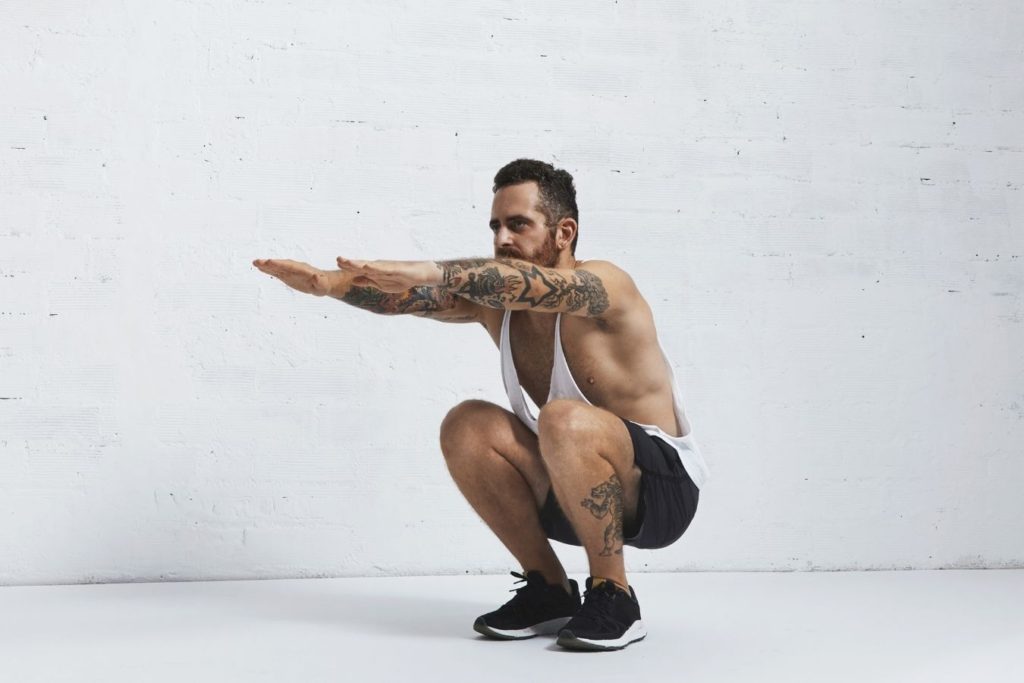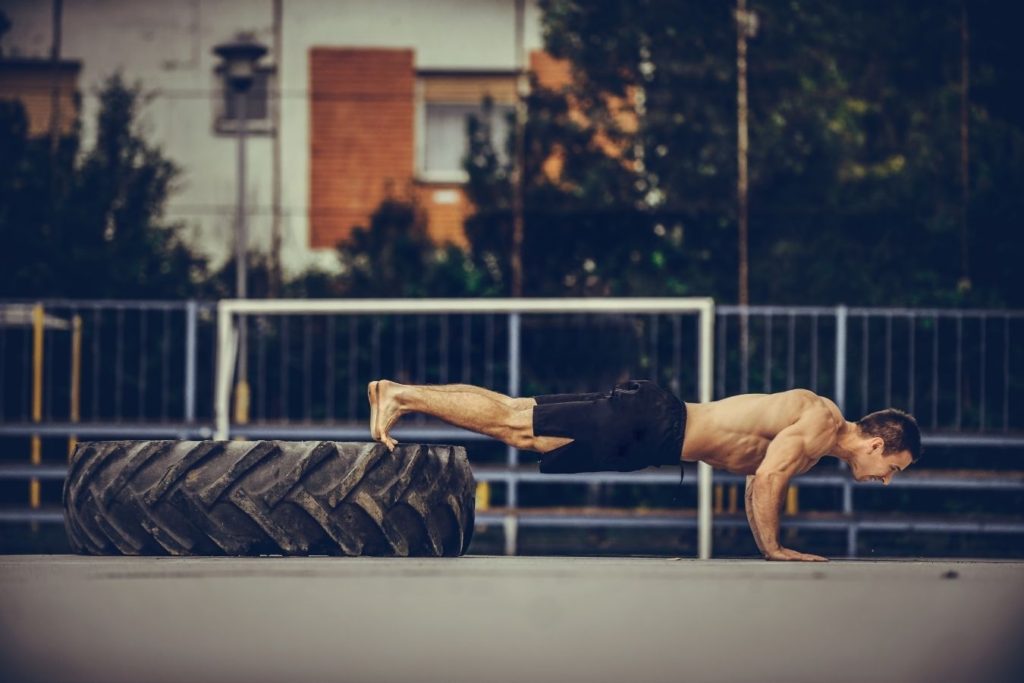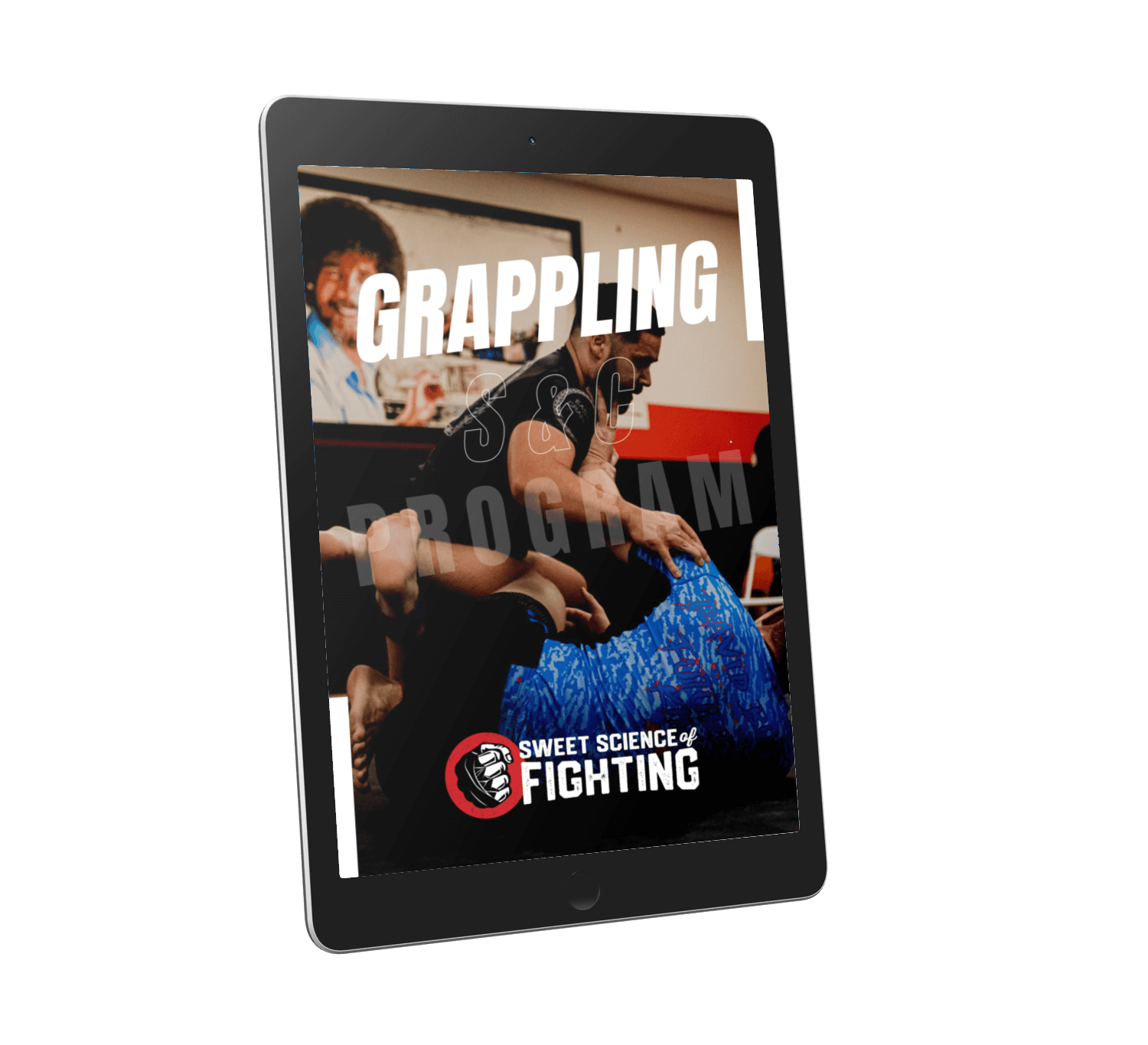There are plenty of calisthenic videos on YouTube. They are pretty impressive! Using them for your BJJ preparation can be a beneficial addition to your training regime.
Calisthenics for BJJ consists of push-ups, pull-ups, squats, single-leg, and grip variations to master your bodyweight. However, as you get more advanced in your strength training, calisthenics becomes less effective at developing strength and muscle for BJJ.
So what are the benefits of performing calisthenics for BJJ and can they be the only thing we perform to optimize BJJ performance?
Benefits Of Calisthenics For BJJ

No Equipment Needed
The main benefit of calisthenics is they don’t require any equipment, at least to get started. As everything is performed with bodyweight, you can do them anywhere.
Some exercises require various apparatus such as pull-ups but going to the local playground or outdoor exercise area usually provides these for free.
Good For The Joints
No additional load, a full range of motion, and high reps are a great recipe for healthy joints and feeling pain-free. Many beat-up lifters who have spent years under a heavy bar opt for bodyweight exercise variations for their assistance exercises for this exact reason.
Develop Insane Muscular Endurance
Because loading is a limitation with most calisthenic exercises, the only way to overload the exercise is to do more volume. Whether that is more reps, sets, or in a shorter time frame, all of these variations will improve muscular endurance.
Low Injury Risk
Lifting weights already has a low risk of injury. Calisthenic exercise has an even lower risk with no additional load being added.
Beginners Make Great Gains
BJJ practitioners who are new to strength training can get stronger and build muscle performing almost any training routine. Calisthenics is no different. A calisthenic training program is great for a beginner as it teaches them how to master their bodyweight which provides a great foundation when learning to lift additional loads.
Cons Of Calisthenics For BJJ

Lacks The Ability To Load Heavy
While you could wear a backpack loaded with books when doing push-ups or pull-ups, heavier loading beyond that is limited.
5 Step Blueprint To Build A BJJ Strength Workout To Demolish Your Opposition
Learn how to plan your strength training to maximize transfer to the mats.
Developing maximal strength becomes impossible when performing purely calisthenics for this reason. Sure, you can make exercises harder by slowing the movement down, but the limited loading means you don’t touch maximal strength development unless you are untrained.
Limited Exercises
Variations of push-ups, squats, single-leg exercises and pull-ups are really your only choice of exercise. If you are lucky enough to have a sturdy table or a bar that is low enough, you could perform inverted rows.
But without additional equipment or a gym, you don’t have much variety.
Primarily Focused On The Upper Body
While you can perform a variety of lower body exercises, without an external load heavier than a backpack of books, you’re not able to make much progress in lower body strength.
Calisthenics is primarily upper body focused because they are easier to perform, easier to challenge, and shows the fastest improvement in strength and muscularity compared to the lower body.
Is Calisthenics Good For BJJ?
For a beginner to strength training, calisthenics is good for BJJ. They will teach you how to master your body weight, an important skill for the BJJ practitioner. However, as you get stronger, calisthenics won’t cut it anymore as they are difficult to load heavier.
If you want to get stronger for BJJ, then a structured strength training program is needed like my Dominate The Mats program for grapplers and BJJ practitioners.
How To Make Calisthenics Harder

While more reps and sets are one way to make calisthenics harder, at some point, you just can’t add any more. So how can you make exercises harder?
Removing Limbs In Contact With The Ground
This is a simple way to increase the intensity of the exercise. Turning a squat into a 1-legged squat, or performing push-ups with one leg off the floor are ways to make the exercise heavier.
If you are really strong, performing exercises such as pull-ups with one arm is another example of removing limbs in an exercise.
Shifting More Weight Over The Arms
This only works for upper body pressing exercises. But if you can shift more weight over your arms, the harder your arms and shoulders need to work due to the increased loading.
For example, decline push-ups with the feet elevated or even handstand push-ups.
Use Extra Range Of Motion
By increasing the range of motion of an exercise, you are increasing the total amount of work performed by each rep. This can be done for both the upper and lower body. For example, performing push-ups with the hands elevated.
Or single-leg exercises such as split squats with the front foot elevated.
Play With Tempo
Slowing the tempo of an exercise down is another way of making calisthenics harder. However, these should be used sparingly. The saying goes “train slow, be slow.” While BJJ is more of a grinding sport than an explosive one, being explosive doesn’t have any drawbacks!
Changing the tempo of an exercise could be performing a 4-6 second lowering phase and a 4-6 second upwards phase. For a real challenge, try performing 60 seconds up and down!
Use Partial Reps
Partials are a way you can modify an exercise to get more volume easily. Simply tack on partial reps at the end of a set. This could be 10 full-range push-ups followed by 10 half reps from the bottom position to halfway.
Use Isometrics
Isometrics are great for BJJ as much of the sport is holding various positions. Especially the grip which can also be trained without equipment. They can also be tacked onto an end of a set like the example above but holding the bottom position of a push-up.
Or holding long duration isometrics for tendon health like the bottom position split squat.
An Example Calisthenics Program For BJJ
A1) Bulgarian Split Squat 3 x 10+10 partials bottom position
A2) Single Leg RDL 3 x 10/leg
B1) Decline Push-Up 4 x 10-20 +10sec isometric bottom position
C1) Pull-Up 4 x 5-10+10sec isometric top position
D1) Handstand Hold Against Wall 3 x 30-45 sec
E1) Hanging Leg Raise 3 x 10-15
E2) Lower Back Power Hold 3 x 20-30 sec


